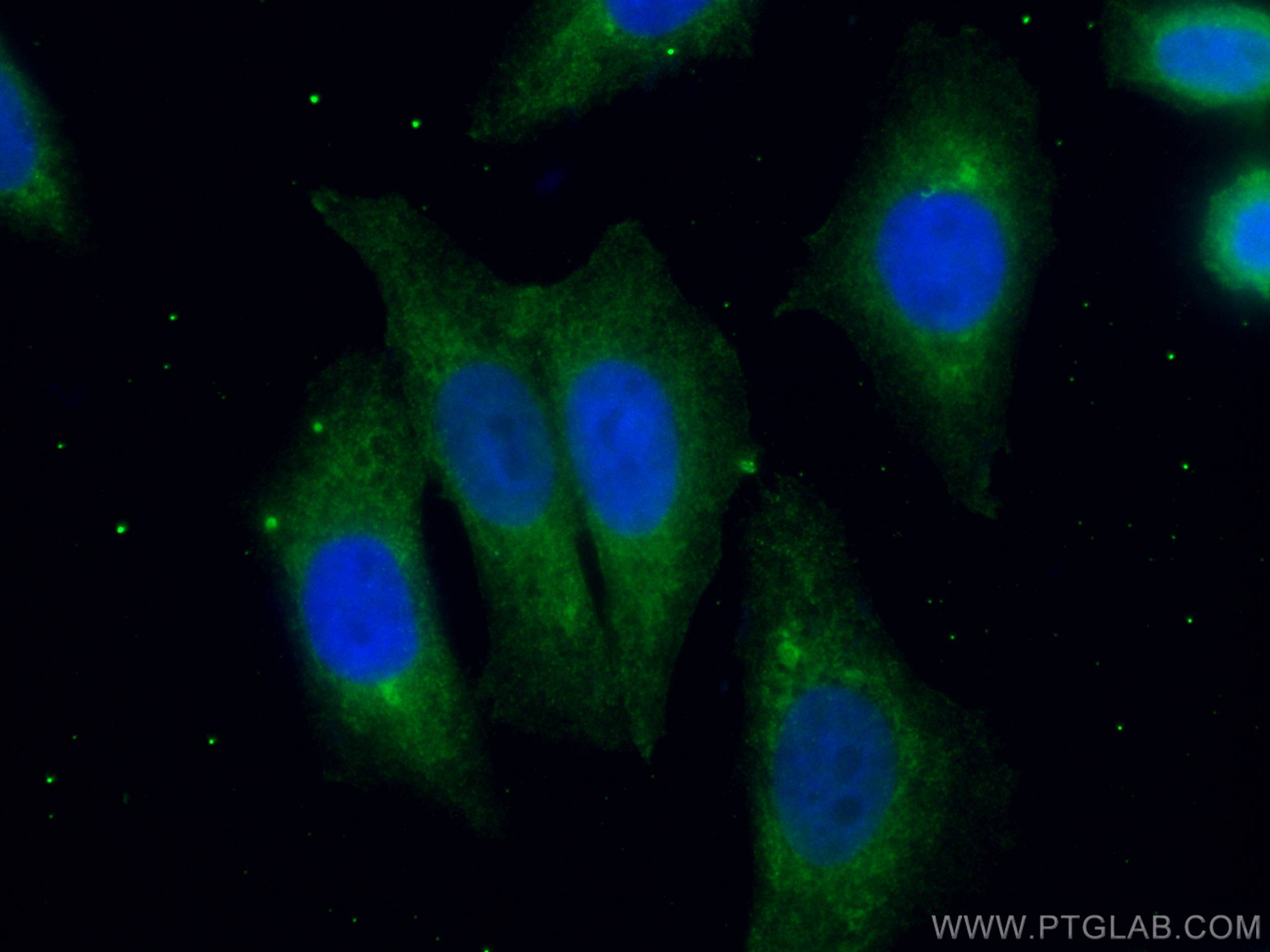Tested Applications
| Positive IF/ICC detected in | HepG2 cells |
Recommended dilution
| Application | Dilution |
|---|---|
| Immunofluorescence (IF)/ICC | IF/ICC : 1:50-1:500 |
| It is recommended that this reagent should be titrated in each testing system to obtain optimal results. | |
| Sample-dependent, Check data in validation data gallery. | |
Published Applications
| IF | See 1 publications below |
Product Information
CL488-67631 targets Ch-TOG in IF/ICC applications and shows reactivity with Human, mouse, rat, pig samples.
| Tested Reactivity | Human, mouse, rat, pig |
| Host / Isotype | Mouse / IgG1 |
| Class | Monoclonal |
| Type | Antibody |
| Immunogen |
CatNo: Ag28770 Product name: Recombinant human CKAP5 protein Source: e coli.-derived, PET28a Tag: 6*His Domain: 1-349 aa of BC120869 Sequence: MGDDSEWLKLPVDQKCEHKLWKARLSGYEEALKIFQKIKDEKSPEWSKFLGLIKKFVTDSNAVVQLKGLEAALVYVENAHVAGKTTGEVVSGVVSKVFNQPKAKAKELGIEICLMYIEIEKGEAVQEELLKGLDNKNPKIIVACIETLRKALSEFGSKIILLKPIIKVLPKLFESREKAVRDEAKLIAVEIYRWIRDALRPPLQNINSVQLKELEEEWVKLPTSAPRPTRFLRSQQELEAKLEQQQSAGGDAEGGGDDGDEVPQIDAYELLEAVEILSKLPKDFYDKIEAKKWQERKEALESVEVLIKNPKLEAGDYADLVKALKKVVGKDTNVMLVALAAKCLTGLAV Predict reactive species |
| Full Name | cytoskeleton associated protein 5 |
| Observed Molecular Weight | 220-240 kDa |
| GenBank Accession Number | BC120869 |
| Gene Symbol | Ch-TOG |
| Gene ID (NCBI) | 9793 |
| RRID | AB_2919511 |
| Conjugate | CoraLite® Plus 488 Fluorescent Dye |
| Excitation/Emission Maxima Wavelengths | 493 nm / 522 nm |
| Form | Liquid |
| Purification Method | Protein G purification |
| UNIPROT ID | Q14008 |
| Storage Buffer | PBS with 50% glycerol, 0.05% Proclin300, 0.5% BSA, pH 7.3. |
| Storage Conditions | Store at -20°C. Avoid exposure to light. Stable for one year after shipment. Aliquoting is unnecessary for -20oC storage. |
Background Information
Ch-TOG (colonic hepatic tumor-overexpressed gene), also known as XMAP215 or CKAP5, is a microtubule polymerase which can promotes cytoplasmic microtubule nucleation and elongation. Through interacting with Aurora-A and TACC3, it plays a major role in organizing spindle poles.
Protocols
| Product Specific Protocols | |
|---|---|
| IF protocol for CL Plus 488 Ch-TOG antibody CL488-67631 | Download protocol |
| Standard Protocols | |
|---|---|
| Click here to view our Standard Protocols |




